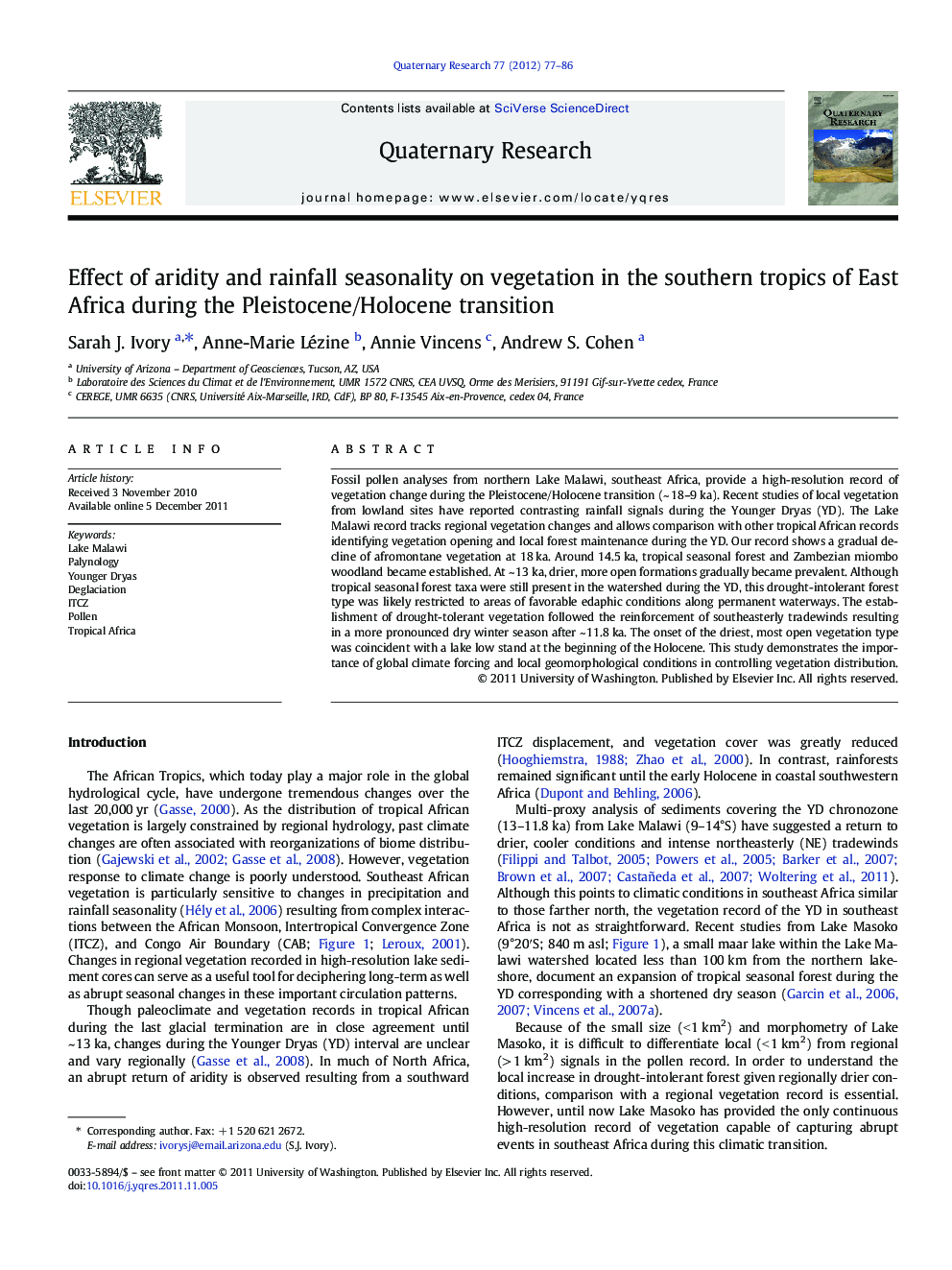| Article ID | Journal | Published Year | Pages | File Type |
|---|---|---|---|---|
| 10501238 | Quaternary Research | 2012 | 10 Pages |
Abstract
Fossil pollen analyses from northern Lake Malawi, southeast Africa, provide a high-resolution record of vegetation change during the Pleistocene/Holocene transition (~Â 18-9Â ka). Recent studies of local vegetation from lowland sites have reported contrasting rainfall signals during the Younger Dryas (YD). The Lake Malawi record tracks regional vegetation changes and allows comparison with other tropical African records identifying vegetation opening and local forest maintenance during the YD. Our record shows a gradual decline of afromontane vegetation at 18Â ka. Around 14.5Â ka, tropical seasonal forest and Zambezian miombo woodland became established. At ~Â 13Â ka, drier, more open formations gradually became prevalent. Although tropical seasonal forest taxa were still present in the watershed during the YD, this drought-intolerant forest type was likely restricted to areas of favorable edaphic conditions along permanent waterways. The establishment of drought-tolerant vegetation followed the reinforcement of southeasterly tradewinds resulting in a more pronounced dry winter season after ~Â 11.8Â ka. The onset of the driest, most open vegetation type was coincident with a lake low stand at the beginning of the Holocene. This study demonstrates the importance of global climate forcing and local geomorphological conditions in controlling vegetation distribution.
Related Topics
Physical Sciences and Engineering
Earth and Planetary Sciences
Geology
Authors
Sarah J. Ivory, Anne-Marie Lézine, Annie Vincens, Andrew S. Cohen,
